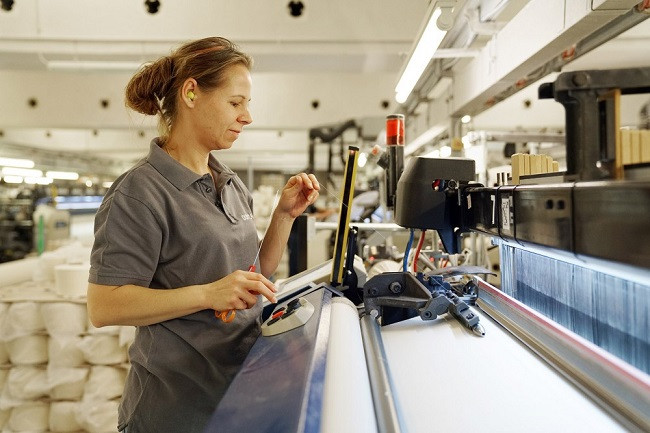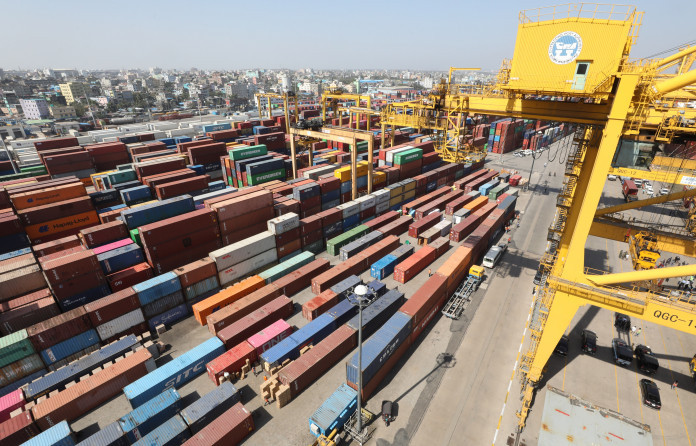The rise of nearshoring in the textile industry
The global textile industry is witnessing a significant transformation, driven by the increasing trend of nearshoring. Nearshoring refers to the practice of relocating production closer to the company’s home market or the end consumer. This shift is not only reshaping supply chains but also offering several advantages, such as shorter lead times, reduced transportation costs, and improved responsiveness to market demands. As companies seek to navigate the complexities of a post-pandemic world, nearshoring has emerged as a strategic response to the challenges posed by global supply chains.

- The drivers behind nearshoring
Several factors have contributed to the rise of nearshoring in the textile industry:
- Global Disruptions: The COVID-19 pandemic exposed vulnerabilities in global supply chains, causing delays, shortages, and increased costs. These disruptions highlighted the risks associated with long supply chains that rely heavily on distant production hubs, particularly in Asia.
- Rising Costs in Traditional Hubs: The cost advantages that once made countries like China and Bangladesh attractive for textile production are diminishing. Rising labor costs, environmental regulations, and trade tensions have prompted companies to reconsider their sourcing strategies.
- Sustainability and Ethical Concerns: Consumers and regulators are increasingly demanding more sustainable and ethically produced goods. Nearshoring allows companies to exercise greater control over their production processes, ensuring compliance with environmental and labor standards.
- Technological Advancements: Advances in automation and digitalization have made it feasible to produce textiles closer to end markets without sacrificing cost efficiency. Technologies like 3D knitting and robotic sewing are enabling manufacturers to produce high-quality goods with minimal human intervention.
- Impact on the supply chain
The shift towards nearshoring is fundamentally altering the dynamics of the textile supply chain:
- Shorter Lead Times: One of the most significant advantages of nearshoring is the reduction in lead times. By bringing production closer to the end consumer, companies can respond more quickly to market trends and demand fluctuations. This agility is particularly crucial in the fast-paced fashion industry, where trends can change rapidly. Shorter lead times also enable companies to reduce inventory levels, minimizing the risk of overproduction and waste.
- Reduced Transportation Costs: Nearshoring can lead to substantial savings in transportation costs. Shipping goods over shorter distances is not only cheaper but also faster, further enhancing the ability to respond to market demands. Additionally, reducing reliance on long-haul shipping reduces the environmental impact, aligning with sustainability goals.
- Improved Supply Chain Resilience: Nearshoring helps companies build more resilient supply chains. By diversifying production locations and reducing dependence on distant suppliers, companies can mitigate the risks associated with global disruptions, such as natural disasters, political instability, or pandemics. This resilience is becoming increasingly important as companies seek to safeguard their operations against future uncertainties.
- Enhanced Collaboration and Innovation: Proximity between design teams and production facilities fosters better collaboration and innovation. Nearshoring allows for closer communication and faster feedback loops, leading to more efficient problem-solving and product development. This proximity also enables companies to experiment with smaller production runs and more frequent releases, catering to the growing demand for customization and limited-edition products.
- Challenges and considerations
While nearshoring offers numerous benefits, it also presents challenges that companies must navigate:
- Cost Considerations: Nearshoring can be more expensive than traditional offshoring due to higher labor and production costs in closer markets. Companies must carefully weigh these costs against the benefits of shorter lead times and increased agility.
- Capacity and Infrastructure: Not all nearshoring destinations have the capacity or infrastructure to handle large-scale production. Companies may need to invest in local facilities or partner with local suppliers to build the necessary capabilities.
- Cultural and Regulatory Differences: Nearshoring often involves working in new markets with different cultural norms and regulatory environments. Companies must invest in understanding these differences and adapting their operations accordingly.

Author: Rohit Dev Sethi, Managing Director, ColossusTex
The future of nearshoring in the textile industry
The trend of nearshoring in the textile industry is likely to continue as companies seek to build more resilient, agile, and sustainable supply chains. However, the success of nearshoring will depend on the ability of companies to balance cost considerations with the need for speed, flexibility, and innovation. As technology continues to evolve, nearshoring may become even more attractive, enabling companies to produce high-quality goods closer to their customers while maintaining competitive pricing. In this dynamic landscape, nearshoring is poised to play a pivotal role in shaping the future of the textile industry.














 এ সময় উপদেষ্টা মুহাম্মদ ফাওজুল কবির খান জানান, বর্তমান সরকার একটি দৃঢ় ম্যান্ডেট নিয়ে এসেছে। তিনি দায়িত্ব গ্রহণের প্রথম দিনই বিদ্যুৎ ও জ্বালানি সম্পর্কিত বিদ্যুৎ ও জ্বালানির দ্রুত সরবরাহ বৃদ্ধি (বিশেষ বিধান) আইন, ২০১০ (সংশোধিত ২০২১)-এর অধীনে চলমান কার্যক্রম স্থগিত করেছেন। বাংলাদেশ এনার্জি রেগুলেটরি কমিশন (সংশোধিত) আইন, ২০২৩-এর ৩৪ক ধারায় সরকার কর্তৃক বিদ্যুৎ ও গ্যাসের মূল্য নির্ধারণের ক্ষমতা স্থগিত করেছে। প্রয়োজনে এ আইন দুটি পরীক্ষা-নিরীক্ষা করে সংশোধন বা বাতিলের উদ্যোগ নেওয়া হবে।
এ সময় উপদেষ্টা মুহাম্মদ ফাওজুল কবির খান জানান, বর্তমান সরকার একটি দৃঢ় ম্যান্ডেট নিয়ে এসেছে। তিনি দায়িত্ব গ্রহণের প্রথম দিনই বিদ্যুৎ ও জ্বালানি সম্পর্কিত বিদ্যুৎ ও জ্বালানির দ্রুত সরবরাহ বৃদ্ধি (বিশেষ বিধান) আইন, ২০১০ (সংশোধিত ২০২১)-এর অধীনে চলমান কার্যক্রম স্থগিত করেছেন। বাংলাদেশ এনার্জি রেগুলেটরি কমিশন (সংশোধিত) আইন, ২০২৩-এর ৩৪ক ধারায় সরকার কর্তৃক বিদ্যুৎ ও গ্যাসের মূল্য নির্ধারণের ক্ষমতা স্থগিত করেছে। প্রয়োজনে এ আইন দুটি পরীক্ষা-নিরীক্ষা করে সংশোধন বা বাতিলের উদ্যোগ নেওয়া হবে।









